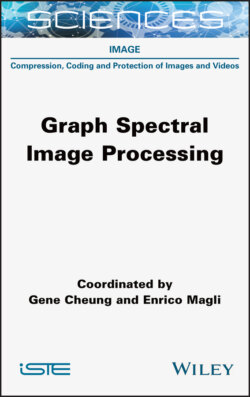Читать книгу Graph Spectral Image Processing - Gene Cheung - Страница 32
1.5.2.1. Design of perfect reconstruction transforms: undecimated case
ОглавлениеThere are various methods available for designing perfect reconstruction graph transforms. First, let us consider undecimated transforms that exhibit symmetrical structure.
An undecimated transform has no sampling, i.e. Sk = IN for all k. Therefore, the analysis and synthesis transforms, respectively, are represented in the following simple forms:
[1.43]
[1.44]
Accordingly, the perfect reconstruction condition can also be simple. The input–output relationship in equation [1.42] is reduced to
[1.45]
Assuming pk(L) := gk(L)hk(L) as the kth product filter, the output signal is thus given by
[1.46]
Therefore, the product filters must satisfy the following condition for perfect reconstruction:
[1.47]
where c is some constant.
Suppose that hk(L) and gk(L) are parameterized as and gk(L) = Uĝk(Λ)UT, respectively. In this case, equation [1.47] can be further reduced to
[1.48]
where This condition is similar to that considered in biorthogonal FIR filter banks in classical signal processing (Vaidyanathan 1993; Vetterli and Kovacevic 1995; Strang and Nguyen 1996). When and the filter set satisfies equation [1.48], the filter bank is called a tight frame because the perfect reconstruction condition can be rewritten as
[1.49]
If c = 1, the frame is called a Parseval frame. In this case, it conserves the energy of the original signal in the transformed domain. Tight spectral graph filter banks can be constructed by employing the design methods of tight frames in classical signal processing. Examples can be found in Leonardi and Van De Ville (2013); Shuman et al. (2015); Sakiyama et al. (2016).
